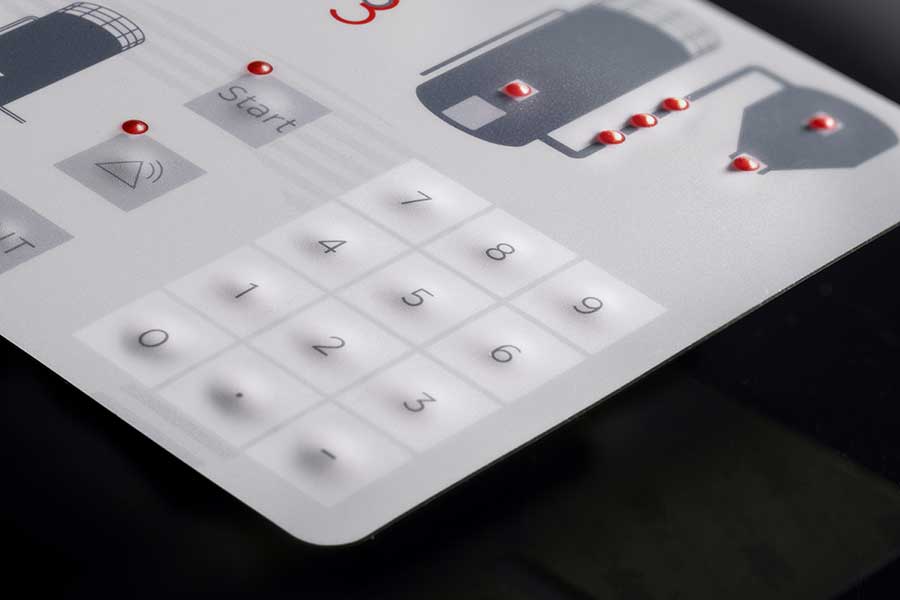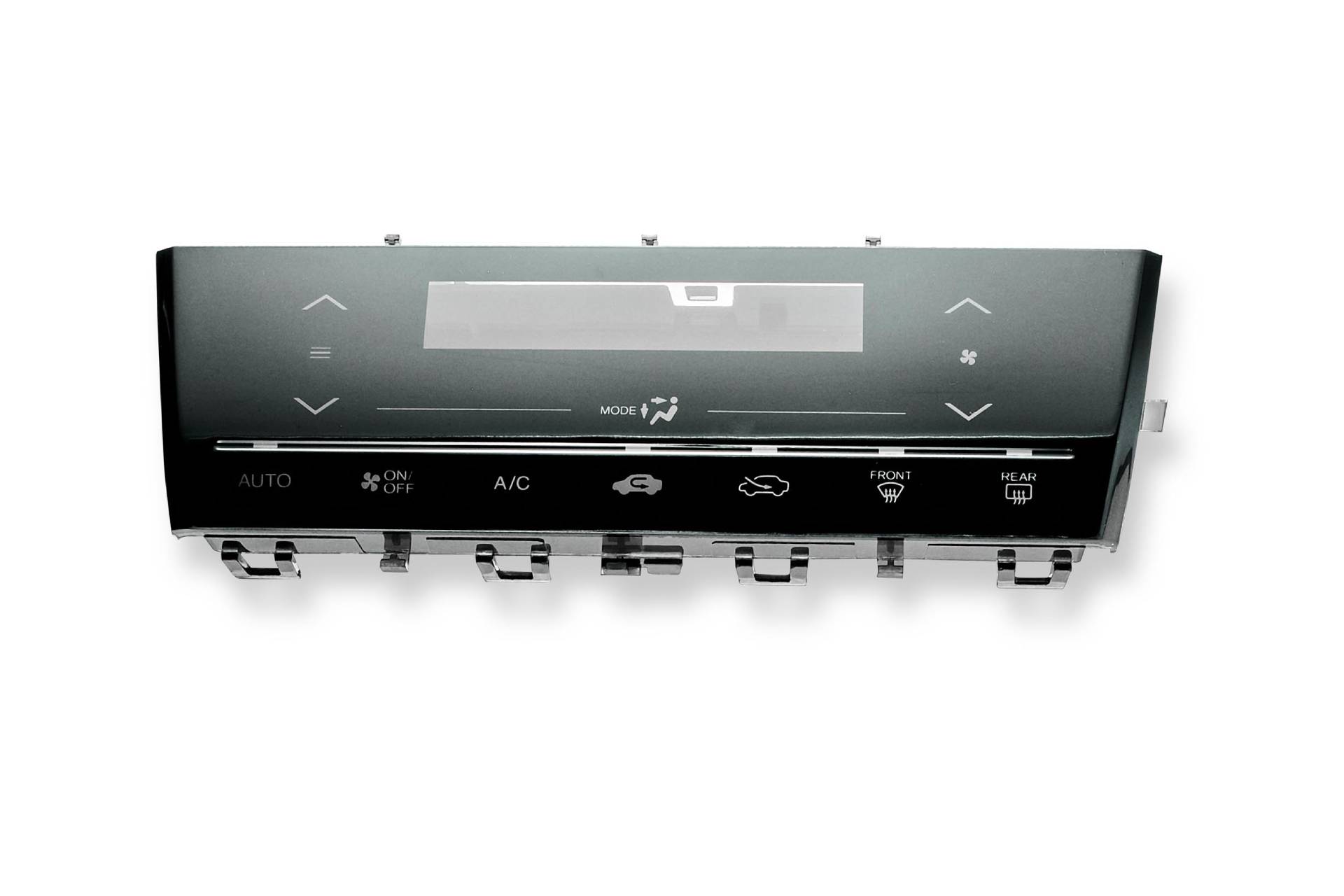Reputable Membrane Switch Manufacturer for Tailored Electronic Interfaces
Discovering the Production Process of Membrane Switch for Numerous Industries
The manufacturing procedure of Membrane switches is a complicated venture that requires precision and attention to detail. From selecting appropriate products to applying rigorous quality assurance procedures, each step plays a vital duty in making sure capability. Numerous markets, consisting of automotive and medical, rely on these parts for their special applications. Recognizing the complexities of this process discloses substantial understandings into how these buttons are created and their influence throughout diverse sectors.
Recognizing Membrane Changes: A Review

Key Products Used in Membrane Switch Manufacturing
In Membrane switch production, the option of key products substantially influences performance and durability. Conductive materials, adhesives, and finishings play crucial roles, while substrate option influences general performance and integrity. Understanding these parts is necessary for optimizing the style and manufacturing of Membrane buttons.
Conductive Materials Summary
Conductive products play a vital duty in the performance of Membrane switches, ensuring trustworthy electrical links within the device. Generally utilized products consist of silver, copper, and carbon-based inks, each offering distinctive benefits. Silver is favored for its high conductivity and sturdiness, making it suitable for applications requiring durable performance. Copper, while a little much less conductive than silver, is a cost-efficient alternative usually used in printed circuits. Carbon-based inks give a functional option, suitable for applications where flexibility and lower expenses are focused on, although they have lower conductivity contrasted to steel alternatives. The choice of conductive materials straight impacts the general dependability, life-span, and efficiency of the Membrane switch, making it an important consideration in the manufacturing process.
Adhesives and Coatings
Layers and adhesives are important components in the production of Membrane buttons, supplying important bonding and protective buildings. These materials assure that different layers of the switch, consisting of visuals overlays and wiring, stick securely to one another, boosting toughness and capability. Commonly used adhesives consist of pressure-sensitive adhesives (PSAs) and epoxy-based solutions, which supply solid bond and resilience. Coatings, such as polyurethane or acrylic, serve to protect against ecological factors, including wetness, abrasion, and chemicals. Furthermore, finishes can improve responsive comments and aesthetic charm, adding to the total customer experience. The option of proper adhesives and layers is essential for enhancing efficiency and long life in diverse applications throughout different markets, guaranteeing that Membrane changes meet specific functional demands.
Substratum Selection Variables
Substrate option plays an important duty in the manufacturing of Membrane switches, as it greatly influences their general efficiency and toughness. Key products such as polyester, polycarbonate, and versatile printed motherboard (FPCBs) are frequently used for their distinctive homes. Polyester is favored for its cost-effectiveness and resistance to abrasion, making it suitable for applications with high wear. Polycarbonate offers premium clearness and effect resistance, perfect for atmospheres requiring high visibility. FPCBs supply enhanced adaptability and are typically used in complicated designs. The selection of substrate likewise influences factors like thermal stability, chemical resistance, and simplicity of printing. Eventually, choosing the appropriate substrate is important for making sure the functionality and longevity of Membrane changes throughout different markets.
The Layout Process of Membrane Switches
The style procedure of Membrane buttons is an essential stage that significantly influences the functionality and looks of the last item - membrane switch manufacturer. It begins with defining the details needs of the application, including dimensions, button layout, and tactile feedback choices. Developers must consider user interaction, making sure that the button is user-friendly and accessible.Next, products are chosen based on durability, flexibility, and environmental resistance. The integration of graphics and branding components is additionally vital, as it improves visual appeal and communication. Prototyping allows for iterative testing, enabling adjustments based upon customer feedback and efficiency evaluations.Additionally, the style has to account for the electric parts, such as adapters and circuits, ensuring reliability and convenience of use. Eventually, a successful style balances performance, aesthetic appeals, and individual experience, leading the way for reliable production and long-lasting efficiency in different industries
Printing Strategies for Membrane Changes
The printing techniques made use of in Membrane switch production play a crucial function in identifying the end product's top quality and functionality. Display printing offers advantages such as longevity and lively color application, while electronic printing developments provide adaptability and accuracy in style. Understanding these techniques can greatly influence the total efficiency of Membrane switches in different applications.
Screen Printing Benefits
Various advantages make screen publishing a favored method for generating Membrane buttons. This technique enables top notch, dynamic shades and in-depth designs, which are important for user interface applications. Display printing is specifically reliable for applying thick ink layers, improving longevity and tactile comments. In addition, it click for more provides superb attachment to various substratums, ensuring durability popular atmospheres. The procedure is cost-effective for big production runs, as it decreases arrangement time and waste. Screen printing supports a wide variety of inks, including specialty and UV-curable choices, making it possible for convenience in layout. Its capacity to create constant outcomes throughout multiple units makes it a trustworthy selection for makers intending for top quality and efficiency in Membrane switch manufacturing.
Digital Printing Innovations

Innovations in electronic printing modern technology are changing the manufacturing of Membrane buttons, supplying suppliers cutting-edge services that enhance design flexibility and effectiveness. Digital printing enables elaborate designs and high-resolution graphics, making it possible for personalized branding and functionality without the limitations of typical approaches. This method decreases configuration times and prices, facilitating shorter production runs and marginal waste, making it perfect for services with differing demands. Furthermore, developments in ink solutions supply better toughness and bond, guaranteeing durability in various settings. As industries significantly seek tailored and complex layouts, electronic printing attracts attention as a vital method, establishing a brand-new criterion in Membrane switch production. The integration of these developments settings manufacturers to satisfy developing market needs properly.
Setting up and Layering of Membrane Switch Components
Careful setting up and layering of Membrane button parts are important to guaranteeing capability and resilience. This procedure begins with the exact alignment of different layers, consisting of the graphic overlay, adhesive, circuit layer, and support product. Each component needs to be thoroughly positioned to preserve electrical integrity and individual interface responsiveness.During setting up, conductive traces are related to the circuit layer, usually made from products like polyester or polycarbonate. This layer is crucial, as it sends signals when pressure is applied. The adhesive used for bonding these layers is likewise picked for its capability to withstand environmental stresses while preserving a safe and secure bond.Heat and pressure are usually used throughout the setting up process to identify that the layers adhere properly without jeopardizing the capability of the switch. Ultimately, interest is offered to the side securing to secure against moisture and impurities, securing the long life of the Membrane switch in various industrial applications.
Quality Control Procedures in Membrane Switch Manufacturing
Quality control procedures play a crucial function in making sure the dependability and performance of Membrane switches complying with the assembly and layering of their parts. In the manufacturing procedure, a number of crucial evaluations are conducted to support top quality standards. These include aesthetic examinations for problems in printing and sticky application, along with useful examinations to confirm the responsiveness of each switch.Additionally, ecological testing is carried out to evaluate the switches' resilience versus temperature changes and moisture exposure. Suppliers frequently carry out statistical process control (copyright) methods to keep track of manufacturing consistency, allowing early detection of anomalies.Furthermore, traceability systems are developed to track materials and elements, making certain accountability and assisting in recalls if essential. Calibration of devices and adherence to industry requirements are likewise essential to keeping product integrity. Collectively, these quality assurance steps guard the performance of Membrane switches over across different applications, eventually boosting customer contentment.
Applications of Membrane Switches Over Across Different Industries
Membrane switches are utilized throughout a varied array of sectors, showcasing their versatility and adaptability. In the medical market, they provide trusted and waterproof user interfaces for gadgets such as analysis devices and infusion pumps, making sure hygiene and simplicity of usage. The vehicle market utilizes Membrane switches for dashboard controls, making it possible for smooth communication in between the motorist and automobile systems.In customer electronic devices, these buttons are located in appliances and portable tools, supplying a sleek, modern visual while boosting capability. Industrial applications additionally leverage Membrane changes for equipment control board, where resilience and resistance to severe problems are essential.Furthermore, the aerospace and defense industries use Membrane buttons for cockpit instrumentation and communication systems, prioritizing dependability and efficiency under extreme conditions. Generally, Membrane buttons play an essential role in boosting the individual experience and operational efficiency across various domain names.
Often Asked Questions
The length of time Does It Take to Manufacture a Membrane Switch?
The production time for a membrane button usually varies from a couple of days to numerous weeks - membrane switch manufacturer. Elements affecting this period consist of style complexity, material availability, and production volume, all affecting the overall timeline noticeably
What Is the Regular Life-span of a Membrane Layer Switch?
The common life-span of a membrane button typically ranges from 1 to 5 million actuations, relying on aspects such as worldly top quality, environmental conditions, and usage regularity, considerably influencing longevity and why not find out more total performance.
Can Membrane Changes Be Custom-made for Particular Applications?
Membrane buttons can undoubtedly this link be personalized for specific applications. Their design flexibility enables modifications in size, form, shades, and graphics, guaranteeing compatibility with unique needs across different sectors and enhancing capability and individual experience.

Are Membrane Switches Eco Friendly?
The environmental impact of Membrane changes differs. Some products utilized might not be environmentally friendly, while innovations in manufacturing procedures are increasingly concentrating on sustainability, intending to decrease waste and promote recyclable elements in their production.
What Are the Usual Failure Modes of Membrane Buttons?
Common failure modes of Membrane buttons include delamination, adhesive failure, wear and tear from usage, dampness access, and electric failures. These issues can significantly affect performance, efficiency, and lifespan in various applications throughout various sectors. Membrane switches can be customized to fit specific style needs, such as dimension, capability, and form, making them extremely adaptable.The construction generally includes several layers, consisting of a graphic overlay, glue, and a circuit layer, which work with each other to produce a smooth customer experience. In Membrane switch manufacturing, the option of essential products significantly affects capability and toughness. The vehicle sector employs Membrane switches for dashboard controls, enabling seamless interaction in between the vehicle driver and lorry systems.In customer electronics, these switches are located in devices and portable gadgets, providing a sleek, modern aesthetic while enhancing performance. Industrial applications likewise utilize Membrane changes for machinery control panels, where toughness and resistance to severe conditions are essential.Furthermore, the aerospace and protection fields use Membrane buttons for cabin instrumentation and interaction systems, prioritizing dependability and performance under severe problems. Membrane buttons can certainly be customized for details applications.